How two SITizens solved maintenance concerns with innovative solutions, and made their mark in the process.
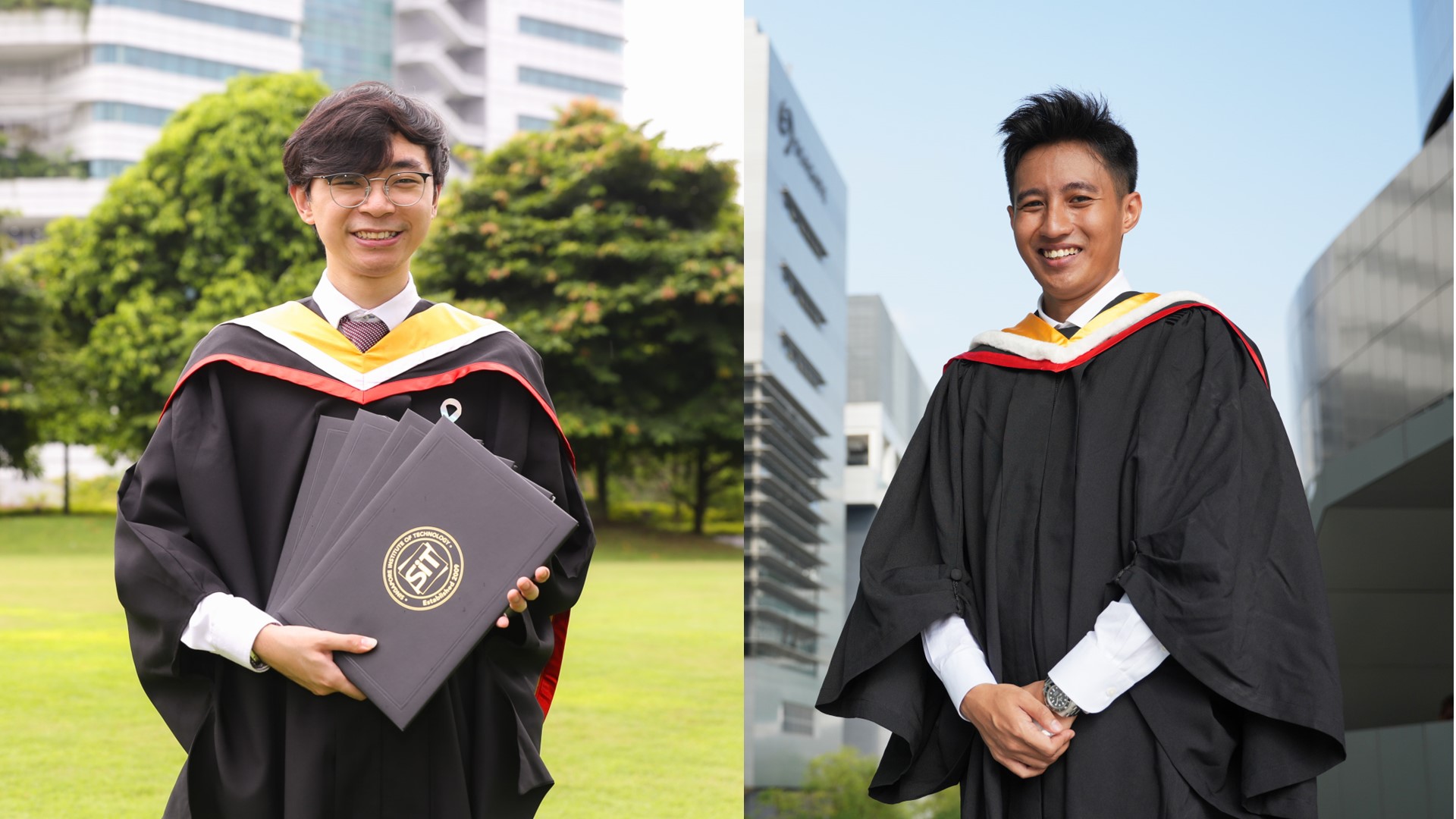
Fermi Toh (left) and Razmin Bin Abdul Rahman at SIT Convocation 2024 in October. (Photo: SIT and Keng Photography)
When the last trains pulled into the depots after a long day transporting commuters across the island, track inspectors began their work with a walk. However, this is more than just a leisurely stroll. These track inspectors are in charge of inspecting all track and wayside components to ensure rail safety.
For years, rail operator SMRT’s track inspectors checked for looseness in thousands of coach screws, a key part of rail safety, by giving them a light kick. Now, this process has been upgraded and given a literal ‘twist’, thanks to a new tool designed and devised by Fermi Toh Zheng Jie, a 27-year-old SITizen who graduated with Singapore Institute of Technology (SIT)’s Bachelor of Engineering with Honours in Sustainable Infrastructure Engineering (SIE) (Land) as well as a Master of Science in Mechanical Engineering.
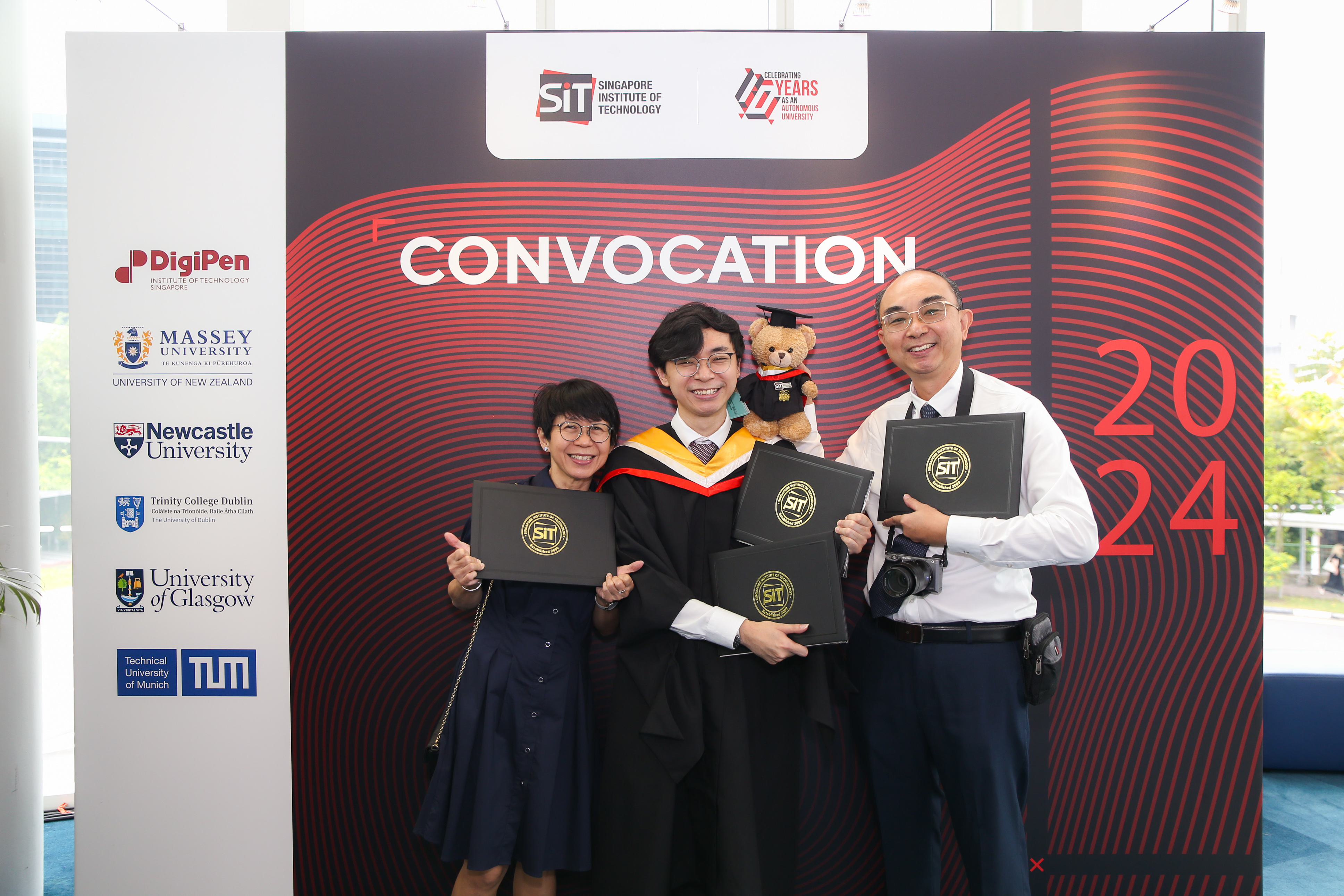
Fermi (middle) with his parents at SIT Convocation 2024 in October. (Photo: SIT and Keng Photography)
Simple and unassuming, the T-shaped tool stands about one metre tall, with a cap at the bottom that fits precisely over a screw. By twisting the tool after fitting it onto the screw, inspectors can check for looseness with far greater precision and force than the traditional method.
“The project was a collaborative effort. Our goal was to create a tool that would be safer, more ergonomic and efficient for inspecting screw looseness,” Fermi explained. “It has since been adopted in every depot for track inspections.”
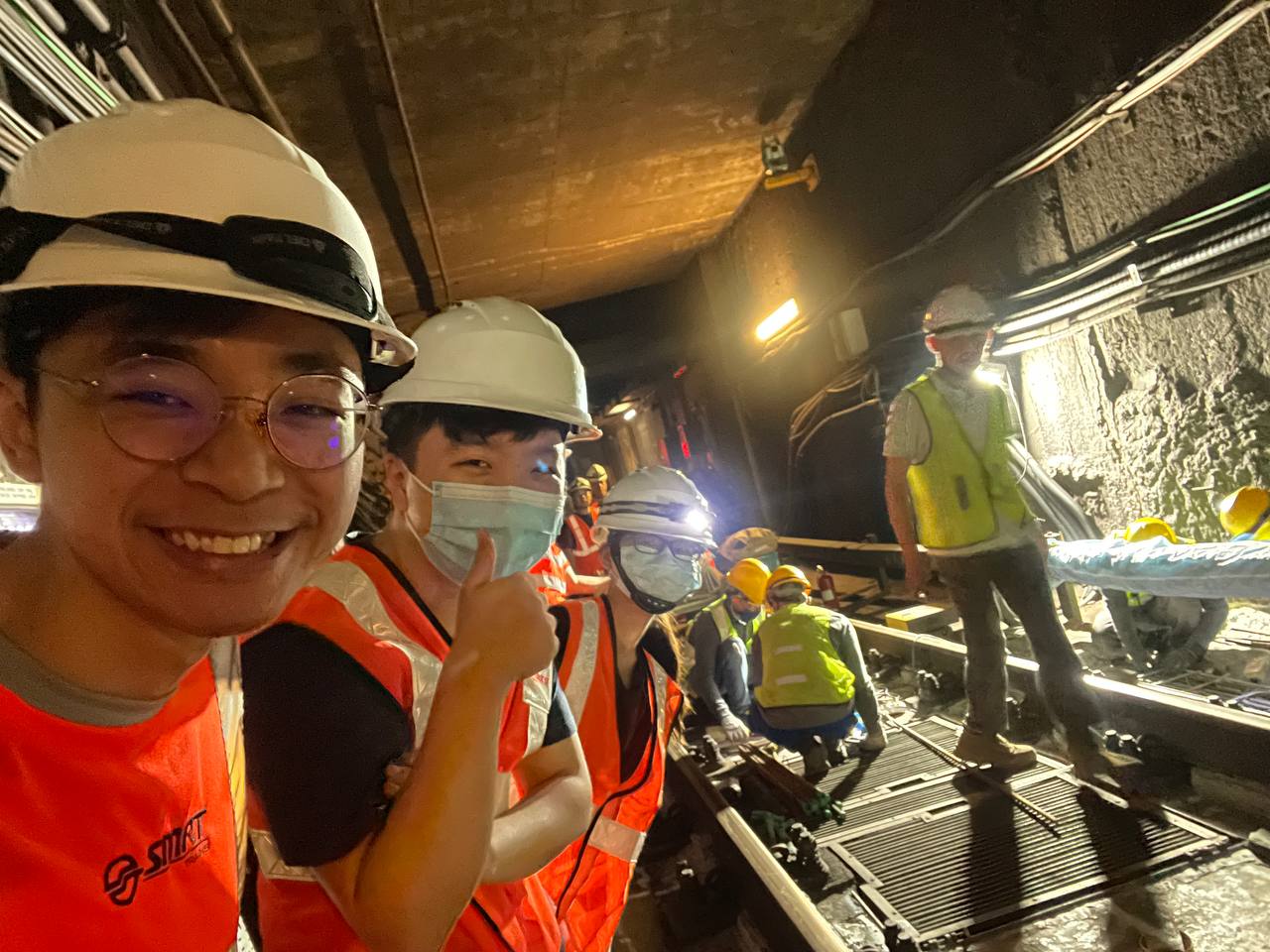
Fermi (extreme left) with his colleagues at the rail tracks conducting routine maintenance and checks on the sump pits, to ensure they stay in top condition to prevent flooding and avoid major disruptions in the tunnels. (Photo: Fermi Toh)
Fermi worked on this project with a fellow SIT classmate as part of their year-long Integrated Work Study Programme (IWSP) with SMRT. Together, they were part of a team of six that included full-time SMRT technicians and engineers. Their focus was on improving the ergonomics, efficiency, and safety of patrollers conducting inspections of the track’s wear and tear, particularly the loosening of coach screws on the tracks over time due to constant vibration.
Although a seemingly simple solution, their work won SMRT’s “Most Innovative Kaizen Project” in 2023, which recognises projects that showcase innovative and practical solutions that improve operations efficiency.
At SIT’s Convocation 2024, Fermi received the SMRT Outstanding Student Award in SIE (Land), which recognises exceptional graduating students from the programme.
Reflecting about his journey in SIT, Fermi says, “My time at SIT has been truly transformative, particularly as I transitioned from a design background in Architecture. The hands-on, industry-driven curriculum was methodical, helping me establish solid engineering fundamentals that were highly relevant to the land transport sector. The IWSP, a unique experience for all SITizens, enabled me to apply these skills and gain a deep appreciation for the land transport industry and the unsung heroes who maintain our transportation backbone. I encourage all students to fully leverage the IWSP to discover their passions, explore their aspirations, and, most importantly, learn more about themselves.”
Gaining Experience in Problem-solving
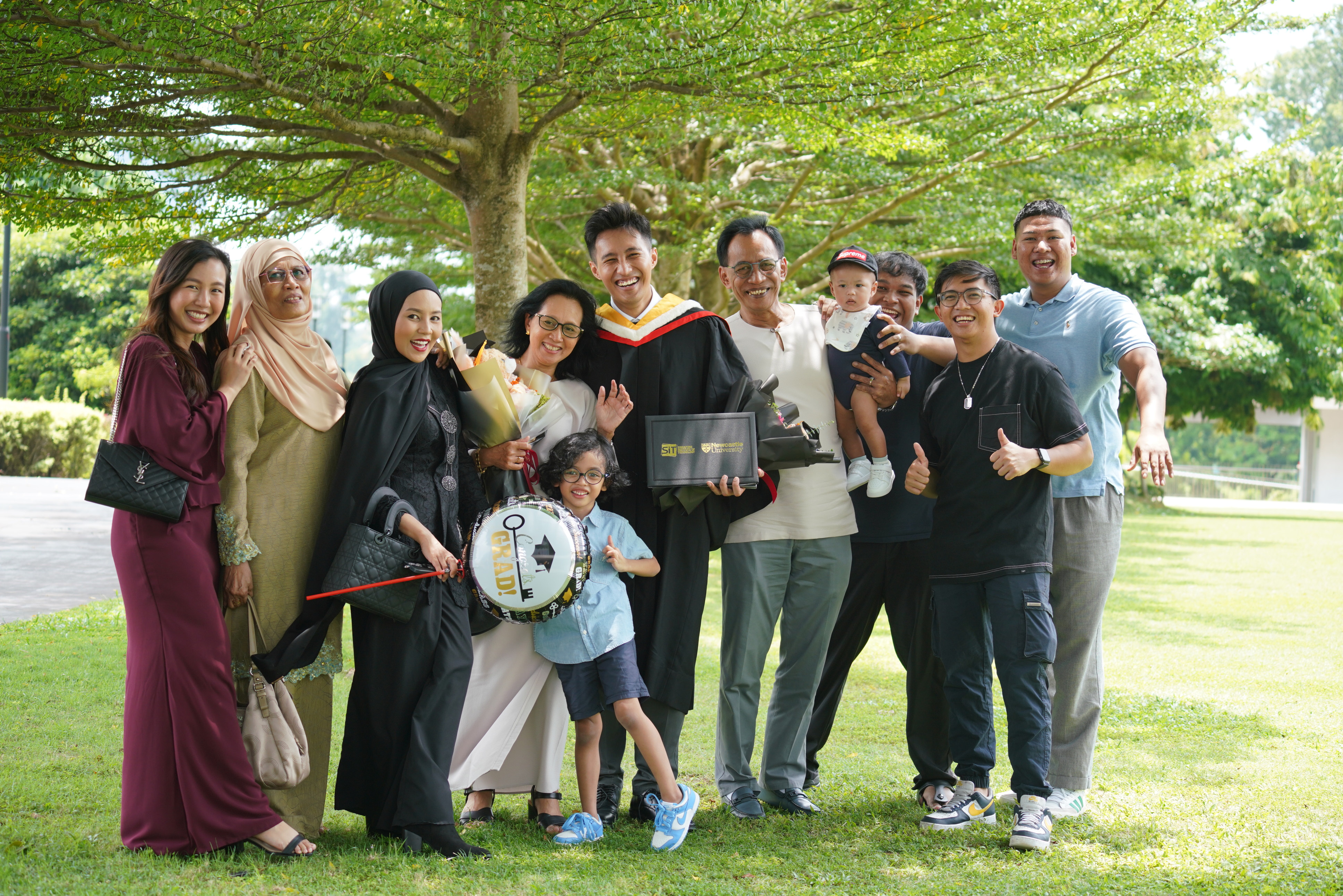
Razmin (sixth from left) with his family members and close friends at SIT Convocation 2024 in October. (Photo: SIT and Keng Photography)
Another SITizen who had the opportunity to solve a real-world problem was Razmin Bin Abdul Rahman, a 26-year-old graduate of the Electrical Power Engineering (EPE) degree programme, jointly offered by SIT and Newcastle University.
Razmin was tasked with tackling the inevitable issue of wear and tear for his final-year capstone project, which involved maintaining power supply cables. The maintenance process usually begins with monitoring cable degradation, where problems with insulation and materials could lead to electricity leakages and major short-circuits. Electricians would conduct site inspections manually to check the power cables one by one. To improve this process, Razmin programmed a software solution that would monitor a graph, with data obtained from measuring electrical currents passed from a power supply to two locations at Changi Airport’s Terminal 3.
His system also measures residual currents, which are leakage currents that flow in the earth cables. If all was well, this graph would be linear, but spikes or dips would alert the user to possible problems.
“If the software detects any anomalies from the incoming data, it will sound an alarm. From there, we can find out which cable is experiencing an issue,” he explained.
The system's real-time monitoring function allows for more frequent and efficient checks. Cables can also be monitored from a remote location simultaneously rather than individually on-site.“With time, it could even have a predictive function,” he shared. Given that the system can capture degradation patterns, Razmin highlighted the potential for further development and even greater control and efficiency in maintenance processes in the future.
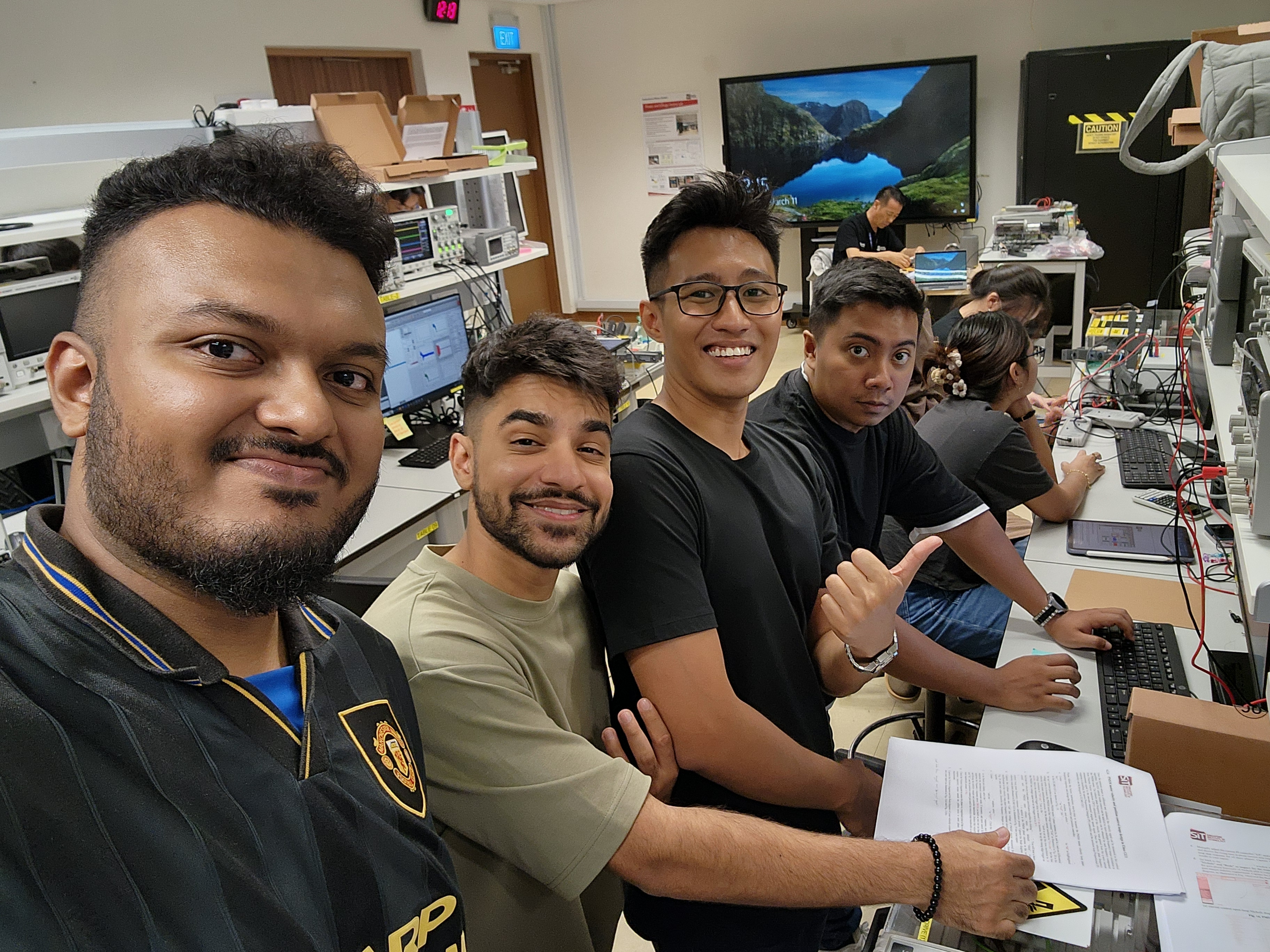
Razmin (third from left) with his classmates during a lab session for his Electrical Power Engineering degree programme. (Photo: Razmin Bin Abdul Rahman)
Devising this system was not without difficulty. Razmin embarked on a tedious journey marked by experimentation, guidance from his professor, and further self-study on Python programming.
“Associate Professor Sivaneasan Bala Krishnan would guide me through everything. He provided invaluable guidance, offering insights and advice at every step, from selecting the right methods for monitoring residual current to interpreting data trends. He ensured I stayed on track throughout my project,” he said.
Razmin’s system now lays the groundwork for Changi Airport Group's transition to a more efficient, condition-based maintenance strategy, moving away from the traditional approach of scheduled preventive maintenance – a huge win for him.
Application Beyond Academia
For both SIT graduates, their learning extends beyond academic achievements and into their careers.
Razmin, for instance, carries forward the spirit of perseverance he cultivated during his SIT days. Now, as a broadcast engineer at national media network Mediacorp, he monitors and maintains critical systems, ensuring the smooth operation of television and radio broadcasts.
Razmin said, “My experience at SIT has been game-changing, equipping me with the technical expertise and analytical skills essential for my role at Mediacorp. The hands-on approach and industry-focused curriculum have not only enriched my academic journey but also sparked a passion for continuous learning. This foundation has directly influenced my aspirations, empowering me to contribute effectively to my work and pursue future growth in the broadcast engineering field.”
Fermi has continued to explore the unique intersection of design, architecture, and mechanical engineering. He is now pursuing a career path in additive manufacturing as a National Additive Manufacturing Innovation Cluster (NAMIC) fellow, hoping to specialise in the healthcare (medical technology) or land transport industry.
![[FA] SIT One SITizen Alumni Initiative_Web banner_1244px x 688px.jpg](/sites/default/files/2024-12/%5BFA%5D%20%20SIT%20One%20SITizen%20Alumni%20Initiative_Web%20banner_1244px%20x%20688px.jpg)


